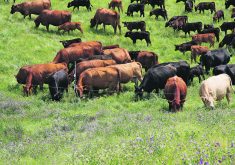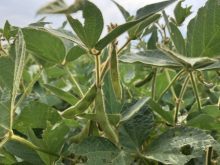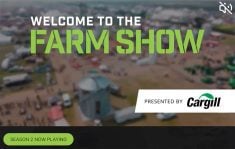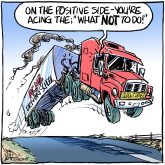U.S. tariffs
The United States government has imposed a 3.9 percent tariff on all imported Canadian (red spring and durum) wheat, claiming that our wheat is unfairly subsidized and is being dumped on the U.S. market.
I echo prime minister (Jean) Chrétien’s remark, “what a joke,” given the fact that the U.S. government is subsidizing American grain producers at a rate many times higher than that of Canadian grain farmers.
The American government has lodged at least 10 unfair trading practice complaints against the Canadian Wheat Board … and has lost (nine so far) …
Read Also
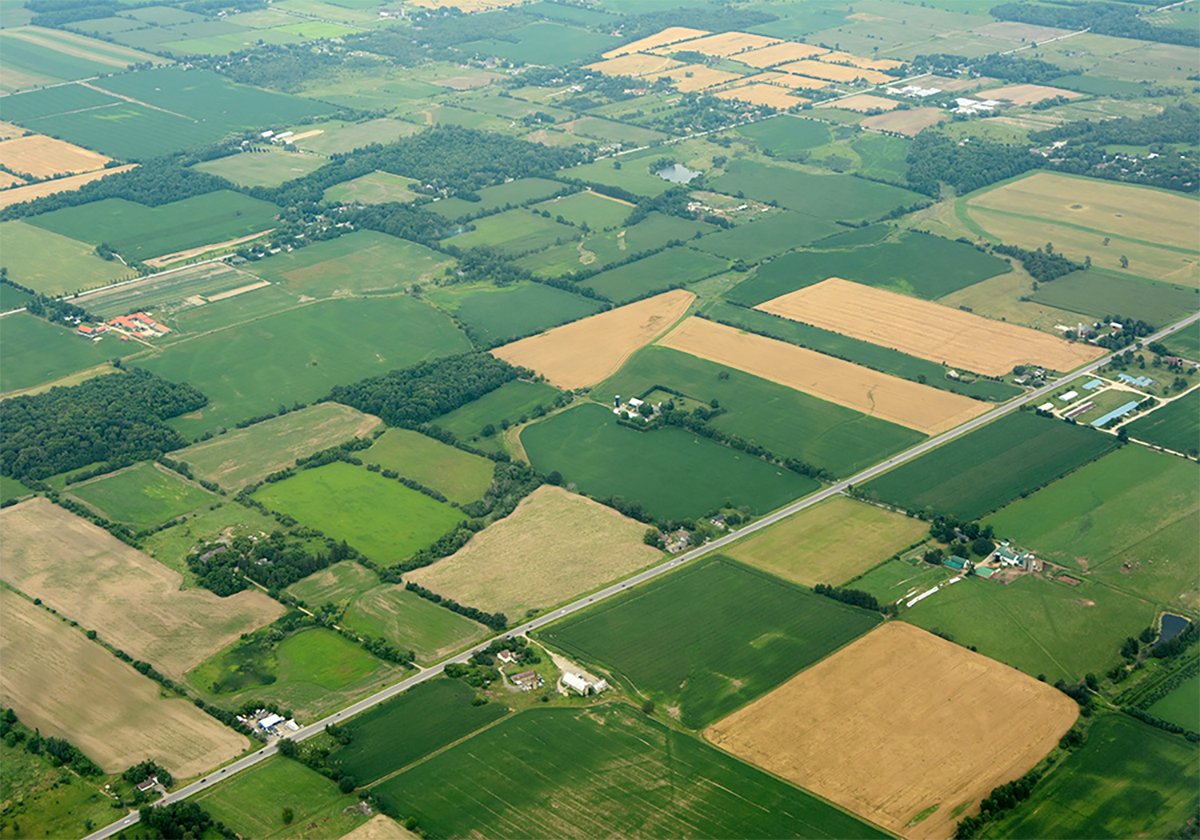
Higher farmland taxes for investors could solve two problems
The highest education and health care land tax would be for landlords, including investment companies, with no family ties to the land.
In response to the latest challenge brought to the World Trade Organization by the U.S. government, the CBC radio station in Alberta recently aired a talk show on this topic. One of the guests was Mr. James Chatenay, who is a director for the CWB. He is one of the only two directors who are in favour of dual marketing.
It is hard to understand how Mr. Chatenay, with his years of experience as a director, exposed to all of the inside information, cannot see how the farmers have benefited from the monopoly selling position of the CWB.
Everyone knows that selling from a monopoly position, regardless of what your commodity is, will always exact the best price for the seller. Why has Mr. Chatenay not seen the light?
It is apparent that Canadian farmers need the CWB in today’s world – a world full of big players with deep pockets and ruthless tactics. You only need to look back to the Crow Rate debate to see how the game is played. …
My advice to Mr. Chatenay is that if he finds the CWB monopoly position to not meet his needs, even though it has the support of the majority of farmers, then he can sell his wheat and barley to the feedlots and feedmills, he could grow other grains or he could raise cattle, bison or elk.
Diversify, Mr. Chatenay.
– Neil Gorda,
Willingdon, Alta.
CWB history
The Canadian Wheat Board – who needs it? Who wants it? The so-called small producers are blamed for the retaining vote in favour of single-desk selling.
Today’s successful farmers are deemed to be those who continue to enlarge their operation. They want to have the option of marketing their own grain and no doubt they may do so successfully. It is my prediction that the CWB will not be with us much longer. Then what?
The marketing giants operating on a global basis are shrewd business corporations. Profit is the name of their game. …
We in agriculture, as in every other business, must plan for the future. But are there lessons to be learned from our past? …
In 1919-20 there was an over abundance of wheat. The government realized that some form of action must be taken. With the urging of Western farmers, the first CWB came into being but the government insisted for one year only.
This met with favour, but no amount of negotiation could change their thinking and the sale of wheat once again went onto the open market.
In 1935, the present CWB came into being with quotas, pooling, initial and final payments. All farmers are treated equally and fairly.
But unrest has developed. Many farmers want to go it on their own. Note: the U.S. wants desperately to get rid of the CWB, (so) it must be doing something good for the Canadian farmer.
My concern is that at any time in the future, we as grain farmers may need protection such as the CWB, but if we lost it, it is gone…. Bill 98 passed July 4, 1935, establishing the CWB Act 1935. Its purpose was to (1) market producers’ grain in an orderly manner; (2) to place the credit of Canada behind the marketing of Western Canadian wheat, barley, and oats; (3) to provide for an initial payment annually to farmers, of the floor price, set by the government. If prices on the open market fell below the initial price, the Government assumed the loss.
The majority of western farmers greeted the bill with satisfaction. It was not perfect, but it provided for them a sense of security. Note: Mr. Bennett lost the next election….
Let it be known that the present board of directors is striving to make it more acceptable to all producers.
– Clint Whetter,
Deloraine, Man.
Thermostat
In the lead-up to the last Alberta provincial election, our premier, Ralph Klein, promised, among other things, to distribute an energy rebate to residential consumers any time that the price of natural gas went above $5.50 per gigajoule.
He described it to operate as a thermostat; the price goes above a prescribed rate,and rebates kick in. Sounds simple enough.
We are now learning that what he meant to say was, the annual, average monthly wholesale price has to exceed this prescribed price before the rebates are to be initiated. Their calculation isn’t even based on a weighted average, as the one gigajoule consumption of July at $3.15 is given the same weight as the 24 gigajoules consumption of January at $7.53.
I don’t know what is more pressing, Ralph needing a lesson on the basic operation of a thermostat, or me needing a lesson on the difference between average and weighted average. I am learning quickly.
I guess that this energy rebate promise fits nicely into the same file as “Scrap the GST” and a “$2 million gun registry.” Different authors, same garbage, all lies.
They made the promise and should live up to it, though it is a rather ill-conceived plan. Presumably, the money to cover this promise would have come from oil and gas royalties, and as such belongs to each and every Albertan equally, not just those who heat with natural gas, as a natural gas rebate.
Nor should it be tied to consumption, as the recipients may wish to spend the rebate money to better insulate their home, or replace an older furnace, rather than just have it handed directly over the utility company, and thus perpetuate the problem.
The money we are talking about is heritage money belonging to each and every Albertan, and is not a political slush fund for the singular purpose of buying elections….
– Doug McGowan,
Nanton, Alta.
Organic farming
When I read articles in the paper by Mr. Ian Cushon espousing so-called organic farming and stating that it will somehow save the planet and then implying that minimum-till and no-till will destroy it, I would like to remind Mr. Cushon that organic farming is referred to as slash and burn agriculture in developing and Third World countries and it absolutely devastates the land and environment where it is practised and may do the same here over time.
In fact, thousands of acres have been ruined or severely affected in Canada by the plow and other forms of tillage and the effects of wind and water erosion.
Also, when he quotes Harvard biologist Edward Wilson and his so-called ecological footprint where he states that the United States uses 24 acres for each of its population to support its lifestyle, this computes to approximately seven billion acres.
This amount of acres equals the total land area of Canada, the U.S. and South America combined, including the cities, the tundra, the deserts, the mountains and the rain forest. This type of reasoning equates with the accounting practices of Enron and WorldCom.
The fact that the U.S. exports more food than any other nation, both as aid and commercially to feed the world’s population, seems to be ignored.
In the future, when Mr. Cushon quotes professors and so-called scientists, he should quote those with some intelligence and not just political agendas as their preachings reflect not only upon himself but other organic growers as well.
– Murray McMillan,
Arcola, Sask.
Viable farming
In order for farming to be a viable business, it must be done as a sustainable Christian community. To attain sustainability, there needs (to) be manufacturing of some kind, such as a flour mill and bakery combination, furniture production either wood or metal, ethanol plant, power plant near cities, slaughter plant, etc.
It is of little benefit to grow grain unless it be made into bread, pastries, rolled into cereals, made into pancake or cake mixes or fed to stock. It is best that all grains be grown organically….
In central and northern parts of the prairie provinces, a big variety of trees including small fruits can be grown. In Saskatchewan the provincial government has already planted a couple of million trees, with more plantings planned. This has been done to help cut down on pollution, as trees absorb pollutants.
These Walker poplars are supposed to be ready in 20 years to make lumber. Wood alcohol can be made. As well, it can be used to generate steam to create electricity.
A repair shop is of high priority in a community, where all repair of engines and machinery can be done, as well as custom repairs for income. If water is available, commercial gardening can be done, as well as greenhouse operation. A carrot grower here makes $100,000 a year.
Talking of commercial gardening, no one person can furnish the 12 most used vegetables to 20 families year round without help. Therefore we need thousands of commercial gardeners across Canada…..
– Guy Talbourdet,
St. Paul, Alta.
Beware of animals
I have spent a lifetime (77 years) around all kinds of livestock, and I have had my share of wrecks. One basic thing I have learned is, never trust a bull of any species. Many farmers and ranchers have been killed or maimed by the “quiet” bull.
Needless to say, I was shocked to see the “cute” picture of a bison bull being petted by two children and a lady. The bull had on a halter but was not even tied up. This is not cute but purely ridiculous. It’s only a matter of time till this bull will kill someone. The owners are putting innocent people in an extremely dangerous position.
Many parents are uneducated in the dangers of working around animals, particularly bulls, so they are unable to give proper advice to their children.
Parents, please take my advice and do not put your child in this sort of environment. These animals may look large and charming, but believe me, they are quicker than greased lightning and those people in the picture would not have a chance if he turned on them.
I would hope the owners of this animal would take more care and precaution in handling.
I also believe that our good farm paper is sending out a dangerous message to the uneducated people regarding farm and animal safety. A nice article on farm safety might be in order, also on the front page.
– Bob Hougham,
Frenchman Butte, Sask.


